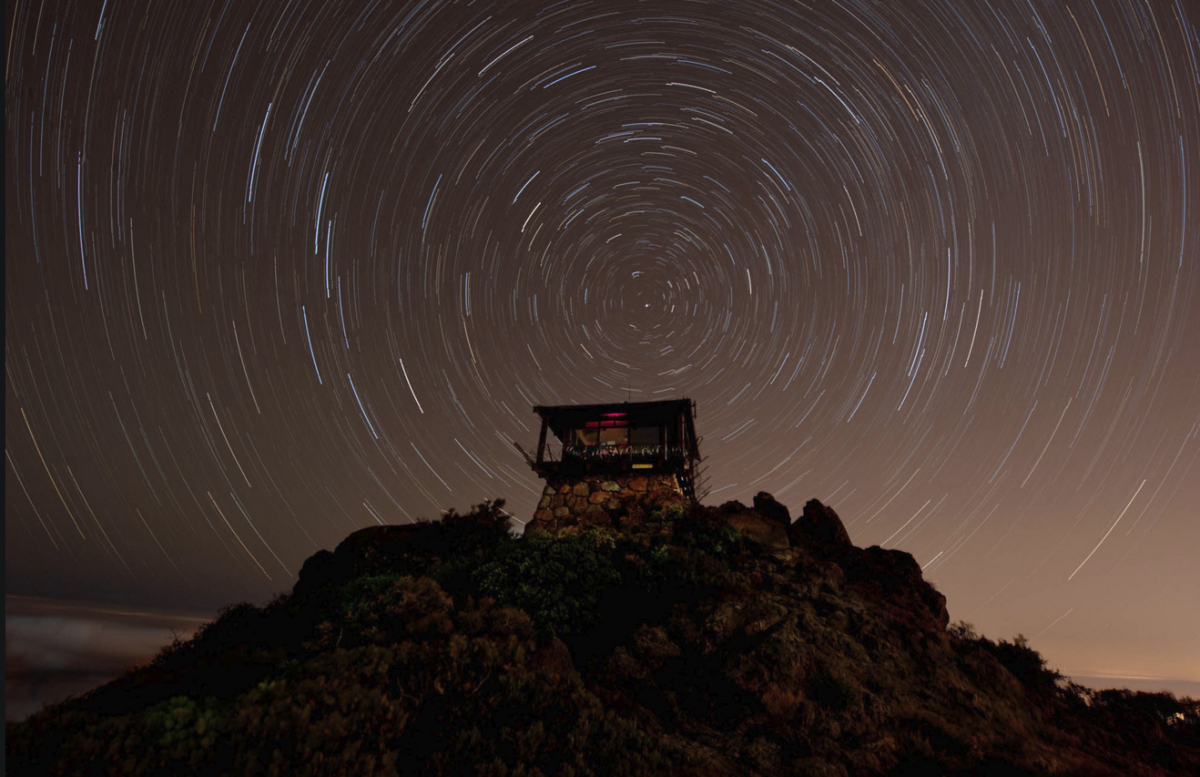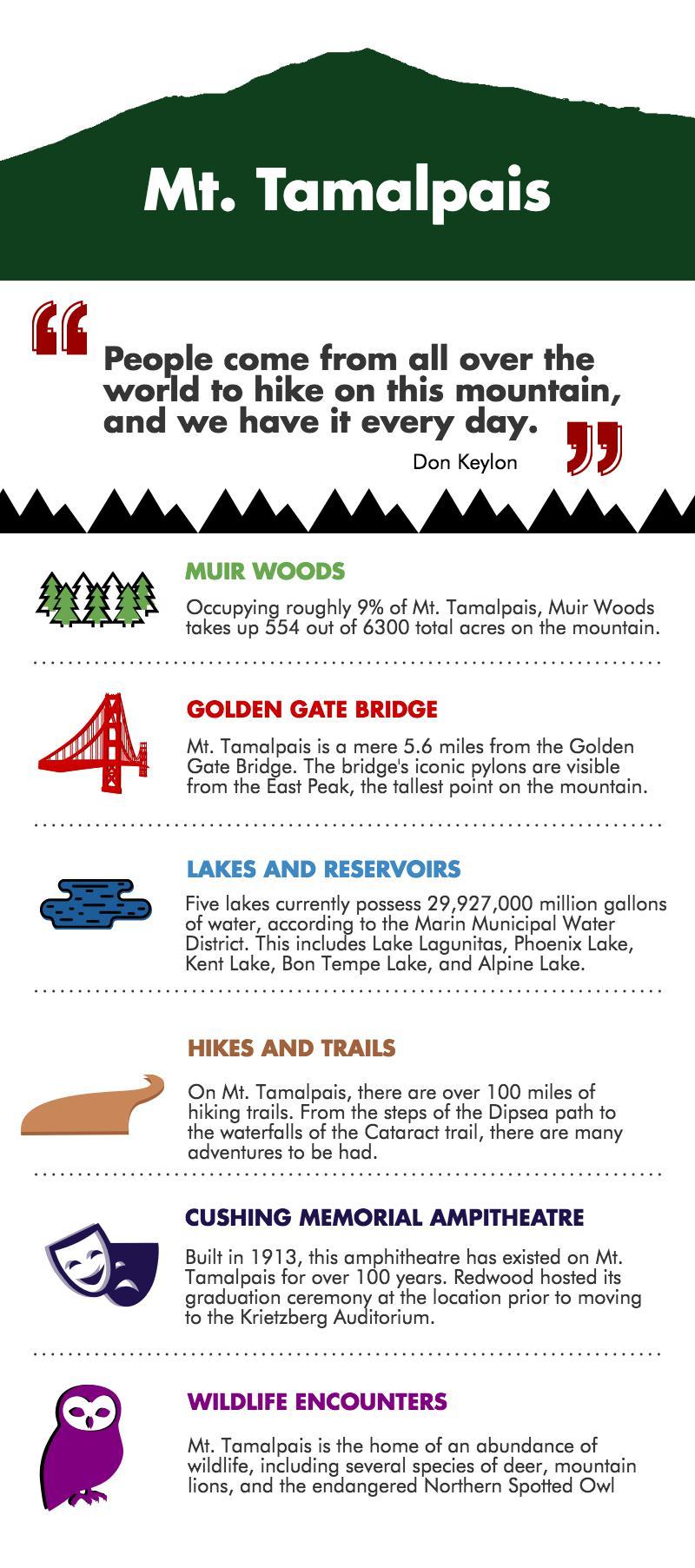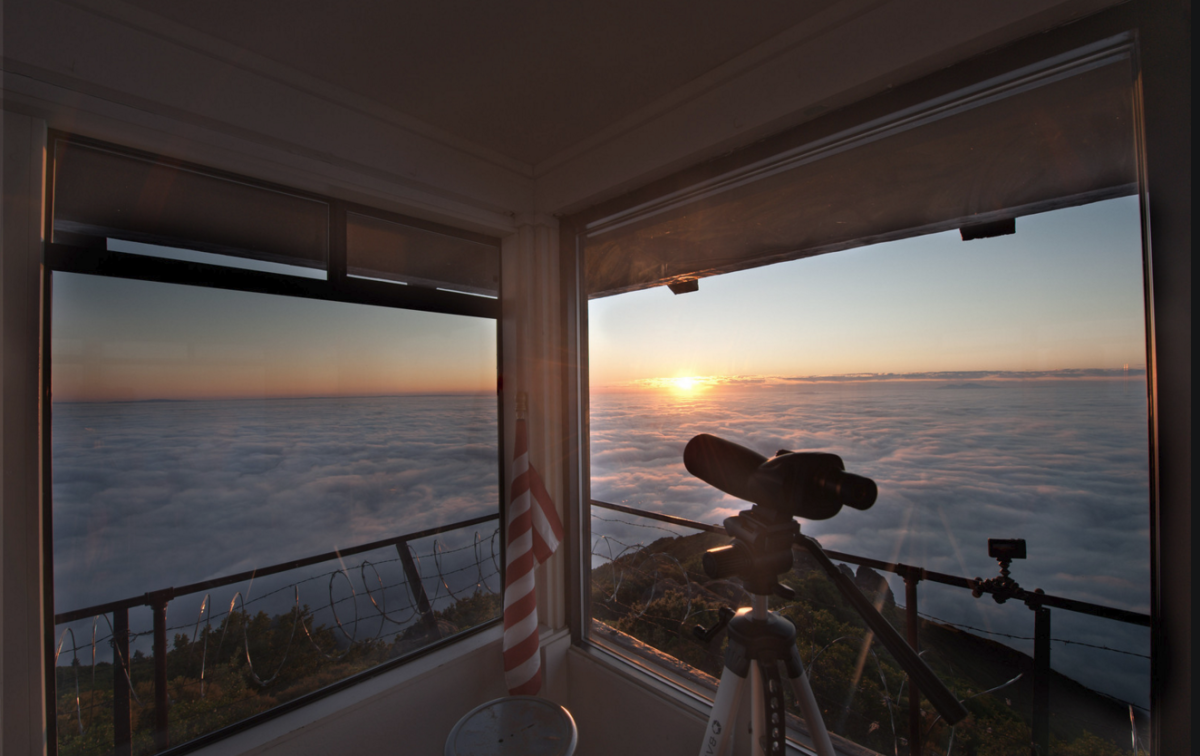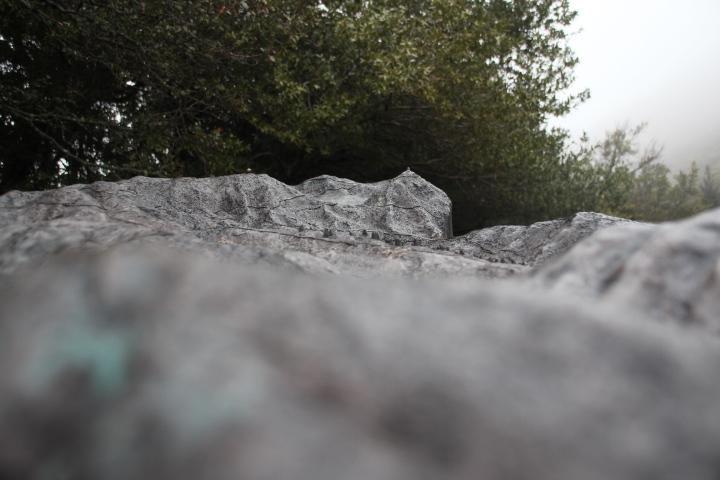At the center of Marin County’s active and prosperous suburbia stands Mt. Tamalpais. On top of this serene, elevated green landscape sits an often misunderstood structure.
This distinct, dark-brown building, that houses the lookouts who scan the surrounding area for fires, has windows that line the second floor and give inhabitants a panoramic view of Marin, San Francisco, and the Pacific Ocean. It is perched upon the East Peak, elevation 2571 ft.
Many see this building every day; however, few understand the important service it provides for much of our county. This building serves as Mt. Tam’s fire post, and it overlooks all of Marin, from Bolinas all the way through past Novato.
Built in 1937, the Gardner Lookout stands above all of Marin’s inhabited and uninhabited areas, and its temporary inhabitants continuously scan for fires. The lookout was named after ex-fire chief Edwin B. Gardner, who died two years prior to the completion of its construction.

“People don’t know what it does. Unless they go up there and read [the plaque], they don’t know it’s a fire lookout,” said volunteer lookout Pat Williams, who began working as a lookout in 1969.
Williams is one of a long line of perpetual overseers to take the reins of this granite slewn, barbed-wire building at the peak of Tamalpais.
https://vimeo.com/158444639Williams, a seasoned veteran, is approaching his 50th year as a lookout. At the age of 21, he lived in the lookout for nearly five months.
“I lived up there for two weeks at a time, and I would come down for one day and pick up supplies and then go back up again,” Williams said.
Williams felt reentering the workforce as a paid lookout was a great opportunity after returning home from the Vietnam War.
“The lookout is no longer a paid position, but when I started up there I was being paid $200 a month, the same exact amount that they were paying me to get shot at in Vietnam,” Williams said. “Being up on Mt. Tam was a pretty good deal.”
To Williams and other lookouts, the job is much more than it appears on the surface. Gary Yost, a six year volunteer, said that becoming a lookout allowed him to spend more time immersed in nature.

“I was mostly interested in becoming a lookout because it gave me time to be on the mountain,” Yost said. “I love Mt. Tam, and the prospect of being the only one up there was really enticing.”
Yost is the creator of the video “A Day in the Life of a Fire Lookout,” which includes time-lapses and peak lookout. It was posted on Vimeo in 2012 and has since been viewed over 200,000 times.
Yost said that the video was intended not only to showcase the beauty of the mountain but also to recruit potential volunteers.
The lookout program is now nearing full capacity with 40 volunteers, according to Yost.

“Being a lookout is much more difficult than it seems because you’re looking at the same scene over and over again, and it’s very easy to zone out,” Yost said.
According to Yost, the lookout’s purpose may seem simple, but surveying thousands of surrounding acres is extremely challenging. However, for many lookouts the pros outweigh the cons, according to Yost.
“[The lookout] really is [like a safe haven]. There are 7 million people in the Bay Area and you’re the only one on top of this mountain, with a huge buffer around you, and you can see all of these people. It’s really spectacular,” Yost said.
Despite their separate backgrounds, the lookouts appreciate the same unmistakable beauty in the mountain.
“You feel like you’re on top of the world. You can see all of the Bay Area, you can see about 200 miles, you can see the snow-capped Sierras from up there, and on a really clear day you can see Mt. Lasson. It’s a special feeling,” Williams said. “There are absolutely magic moments up there.”
Don Keylon, a firefighter who manages and coordinates the volunteer lookout program, has only spent the night in the lookout twice, but he experienced many of the same feelings.
“I found myself waking up that night and just looking down at the lights and the cities–– San Francisco, Marin County,” Keylon said. “I was thinking about how I am the only one up there, and it really is a great feeling. I was just enjoying having Mt. Tamalpais all to myself.”
According to Yost, Mt. Tamalpais has been admired and enjoyed for thousands of years by native populations in the region. The Miwoks, the indigenous American Indian population in Northern California, considered Mt. Tamalpais to be the most sacred place in this area.
“Mt. Tamalpais occupies a very exalted position in Native American mythology. And prior to Westerners’ arrival, [Miwoks] rarely ever traveled toward the peak because it was considered too close to their spirit,” Yost said.
“The mountain is a spiritual mother in that it represents this high exalted place,” Yost said. “But it’s also a very physical mother because it provides us with all of the water that we drink.”
According to Yost, this spiritual significance is the primary draw for travelers and tourists looking to venture toward the peak of Tamalpais. And though the Miwoks rarely climbed to the peak, a diverse range of people have made the trip.
“I met a lot of interesting people up there,” Williams said. “A lot of people go to the top of the mountain from all over the world. I was meeting people that were ambassadors in different countries, Nobel Prize winners.”

For Yost, the mountain represents a guardian that looks over everyone and everything in the Bay Area.

“Mt. Tamalpais is sacred to me primarily because I feel protected by it,” Yost said. “The mountain provides me with the water that I drink, but it also provides me with this sentinel-like quality that it’s always there, sheltering me. It is a place I can go for refuge when I need it.”
Yost also enjoys the wilderness of the mountain.
“Mt. Tam is a place where you can think, or not think, but in general just to be restorative.” Yost said. “And to be able to get away from the world and just aimlessly wander, encountering wildlife or other hikers wanting to do the same thing, is really healing and meditative.”
For Williams, Tamalpais provides a sentimental value of origin and and has a special place in his memory.
“The mountain to me is home. The mountain is a sacred place for me, which is why I’m up there,” Williams said. “Mt. Tam is part of me, or I’m part of Mt. Tam. Mt. Tam is a lot bigger than all of us.”











